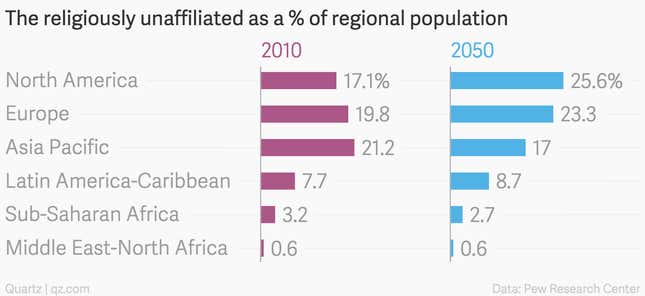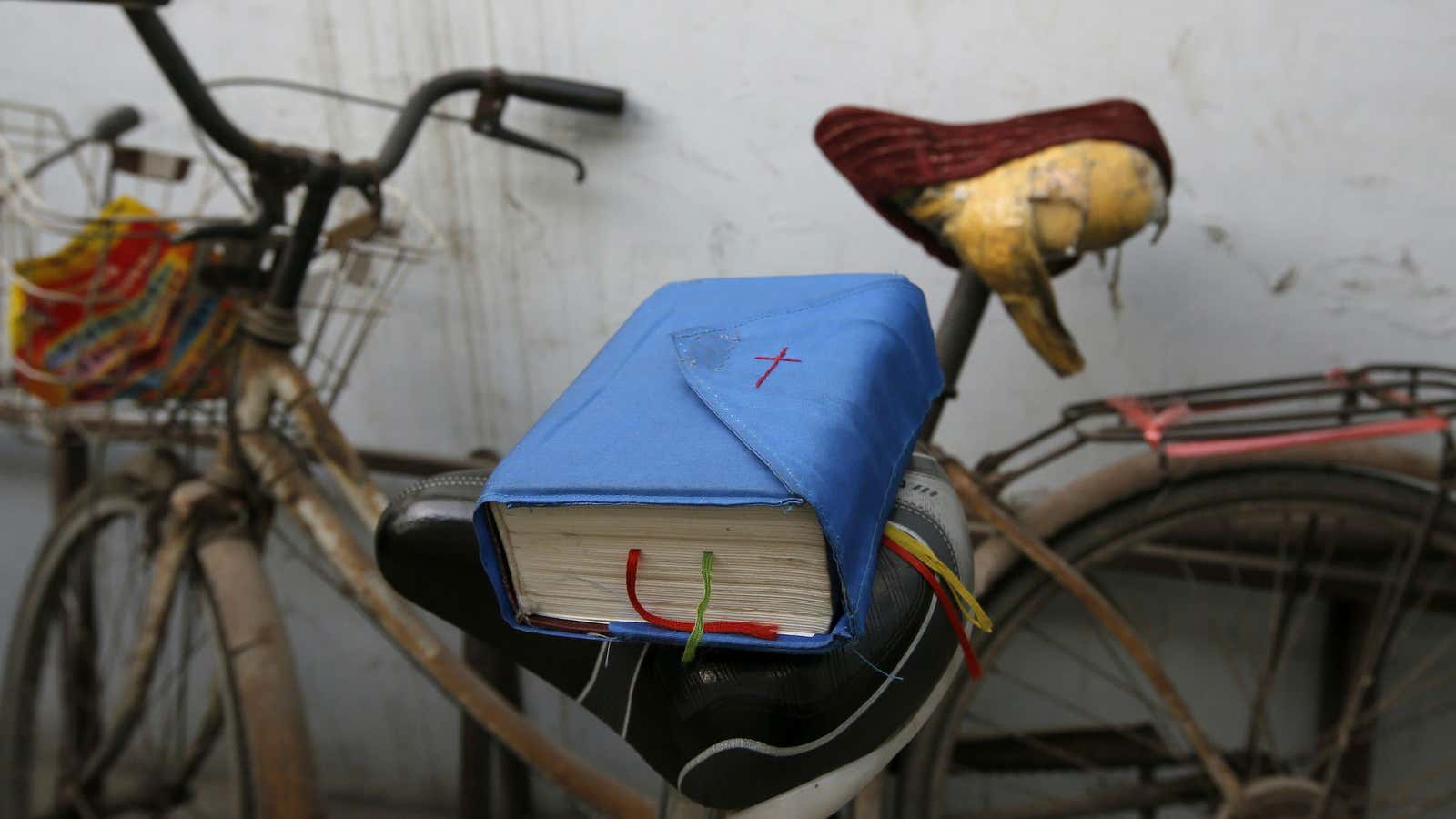Atheists, agnostics, and other religious non-affiliates are a dying breed in Asia. According to a Pew Research Center study released last week, Asia’s shrinking pool of men and women who don’t identify with any religion are driving a drop in the proportion of “religious nones” in the world.

The percentage of the unaffiliated in Asia Pacific—home to about 76% of the world’s unaffiliated—will fall to 17% in 2050 from 21%, Pew estimates. Even though the percentage of non-religious is growing in North America and Europe, this drop in Asia and the growth of religious communities elsewhere will mean the unaffiliated will make up only 13% of the world’s population in 2050, down from 16% in 2010.
Researchers attribute the drop to the fact that non-religious types in Asia are typically older, have less children, and “switch” or convert to a religion less often. The median age of a woman in Asia who doesn’t identify with a religion was 35, compared to 28 for the religiously affiliated, the report noted.
In China, where over half of the world’s religiously unaffiliated live, the non-religious as a percentage of the Chinese population is expected to fall to 50% in 2050 from 52% in 2010 as fertility rates stay low and the working age population shrinks.
Social theorists once believed that as a country develops, its people grow less religious. That may not be happening in China or elsewhere in Asia. Data on religious habits in China are hard to come by, but Fenggang Yang, a sociologist at Purdue University, estimates that China’s population of Christians may have grown an average of 7% a year between 1950 and 2010, and could account for as much as 67% of the population by 2050, compared to 5% now.
In Singapore, the number of Muslims and Hindus as a proportion of the population is also expected to rise.
